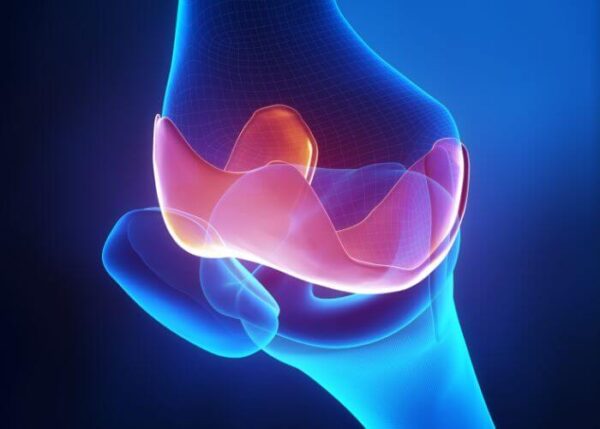Joint Preservation & Cartilage Restoration in Faridabad
Your joints play a pivotal role in your ability to move and carry out daily activities. Over time, joints can be subject to wear and tear, injuries, and degenerative conditions that can threaten your mobility. Joint preservation and cartilage restoration are essential aspects of orthopedic care that aim to protect and maintain the health of your joints, allowing you to enjoy an active life.

- Joint Preservation:
Joint preservation is the proactive approach to maintaining joint health, especially in cases where joint degeneration is evident or anticipated.
It focuses on preventing or delaying the need for more invasive treatments like joint replacement. Lifestyle modifications, physical therapy, and the use of orthobiologics (natural substances that promote healing) are commonly employed in joint preservation.
Joint-preserving surgeries may include realignment procedures to correct joint instability.
- Cartilage Restoration:
Cartilage is the smooth, flexible tissue that covers the ends of bones in a joint, allowing them to move without friction.
Cartilage restoration techniques are designed to repair damaged or lost cartilage in joints. Common approaches include microfracture, osteochondral grafting, and autologous chondrocyte implantation (ACI), among others.
These procedures aim to reduce pain, improve joint function, and slow the progression of arthritis.
- Non-Surgical Approaches:
Joint preservation often begins with non-surgical strategies like physical therapy, activity modification, and the use of assistive devices.
Anti-inflammatory medications and orthobiologics, such as platelet-rich plasma (PRP) and stem cell therapy, may be used to reduce pain and promote healing.
- Surgical Options:
When non-surgical methods are insufficient, surgical interventions may be considered. Procedures like high tibial osteotomy (HTO), joint realignment, and ligament reconstruction can help address joint instability and deformities.
Cartilage restoration surgeries focus on repairing or replacing damaged cartilage.
- Rehabilitation and Physical Therapy:
Following joint preservation or cartilage restoration procedures, rehabilitation and physical therapy are crucial for a full recovery.
These programs aim to restore joint mobility, muscle strength, and overall function.
- Patient Education:
Understanding the importance of joint preservation and cartilage restoration is essential. Patients should be aware of risk factors, joint protection techniques, and the signs of joint problems.
- Benefits:
Successful joint preservation and cartilage restoration can result in reduced pain, improved joint function, and a better quality of life.
These approaches can delay or potentially eliminate the need for joint replacement surgery.
Joint preservation and cartilage restoration are essential components of orthopedic care that focus on keeping your joints healthy, functional, and pain-free. Whether you’re an athlete seeking to return to your sport or an individual aiming for a pain-free, active lifestyle, these strategies offer hope and improved joint longevity.
Joint Preservation & Cartilage Restoration – Protecting Your Natural Mobility
The main goal of joint preservation treatment in Faridabad is to slow down cartilage destruction, thus allowing patients to avoid undergoing joint replacement surgeries. The goal of cartilage restoration surgeries is to heal damage while decreasing pain and restoring proper joint operation. The treatments work best for dynamic individuals including athletes, together with patients who have early-stage arthritis or joint injuries.
Dr Naman Goel is an expert Joint Preservation surgeon in Faridabad who delivers minimal and highly advanced techniques that help patients restore their joints while improving lasting mobility.
Who Needs Joint Preservation & Cartilage Restoration Treatment?
In the following cases, you may need a joint preservation and cartilage restoration specialist in Faridabad.
- Athletes & Active Individuals: The symptoms of joint pain affect people who experience either chronic injuries or repetitive overuse of their joints.
- Early-Stage Osteoarthritis Patients: The patient has cartilage wear, which makes them unfit for full joint replacement surgery. They may require a cartilage repair doctor in Faridabad.
- Young Patients with Cartilage Damage: Preventing future complications and arthritis.
- Those with Meniscus or Ligament Injuries: Seeking long-term joint health solutions.
Advanced Treatment Options
- Microfracture Surgery: The surgical procedure makes tiny openings in bone tissue to encourage fresh cartilage cell formation.
- Autologous Chondrocyte Implantation (ACI): The patient’s cartilage cells become an essential part of this treatment method, which helps fix damaged areas.
- Osteochondral Transplant (OATS/Mosaicplasty): Transfers healthy cartilage from one part of the joint to another.
- Viscosupplementation (Hyaluronic Acid Injections): The application of this treatment provides both lubrication benefits and pain relief, together with improved joint stiffness.
- Platelet-Rich Plasma (PRP) Therapy: The patient receives cartilage healing growth factors derived from their blood cells for tissue restoration.
Benefits of Joint Preservation & Cartilage Restoration
- Delays or Prevents Joint Replacement: Natural joint elements will remain intact for extended periods.
- Reduces Pain Inflammation: Enhances daily comfort and mobility.
- Minimally Invasive Procedures: Faster recovery with less surgical trauma.
- Improves Joint Function: The procedure enables patients to resume activities normally done before their condition.
Recovery Following Treatment
Dr. Naman Goel will instruct physical therapy treatments for joint recovery and muscle strengthening. Patients undergoing joint preservation and cartilage restoration surgeries need sling equipment after their procedure, which helps stabilize the joint during its recovery period.
Book An Appointment Today!
If you are suffering from joint pain, cartilage damage, or any related issue, this best joint preservation clinic, Faridabad, is available to short all your queries. Get proper treatment understanding by calling our expert, Dr. Naman Goel. You can contact us at +91 8851510002 or +91 9910340578.
